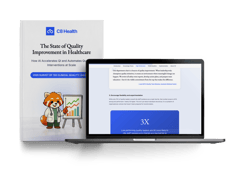
Top 4 Different Methods of Employee Training in Healthcare
In healthcare, we're always learning. But old-school training methods like lectures and printed handouts don't always hit the mark. They're not interactive and can feel a bit detached from our day-to-day work.
We're constantly picking up new things in our clinical settings, so shouldn't our training keep pace? By aligning our learning strategies with the latest trends in the medical field, we can make sure our teams are ready and able to provide quality care.
So, let's get into why training matters so much in healthcare, and how we can boost learning for our teams.
» Give everyone on your team easy access to knowledge with this solution
Meet the Expert
Mical DeBrow is an accomplished healthcare leader and clinician with extensive expertise spanning pharma, healthcare payers and providers, and healthcare information technology.
The Importance of Employee Training in Healthcare
Employee training is key to delivering top-tier healthcare. It arms our teams with the skills and know-how they need to give patients the best care possible.
Proper training also helps reduce medical errors, minimize malpractice risks, and improve healthcare facilities' efficiency. Therefore, healthcare professionals must keep themselves updated with clinical guidance, advancements, regulations, and best practices to provide the best possible care to patients.
» Discover more about healthcare management's roles and challenges
1. E-Learning Modules
E-learning is an effective tool in healthcare that helps organizations improve the quality and consistency of their training programs while increasing efficiency through knowledge management systems. In essence, it offers increased flexibility and scalability for healthcare training.
More benefits of online learning include:
- Accessibility around the clock
- Reduced cost
- Self-paced learning
- Efficient training of large, dispersed groups
- Rapid access to specific knowledge as needed
E-learning requires learners to be self-directed and motivated. One of its drawbacks is the lack of opportunity for hands-on skill practicals. Technology is important in facilitating more engaging and effective learning experiences, particularly through emerging technologies like simulations and virtual reality.
2. Traditional Classroom Training
Classroom-based training has traditionally been a go-to approach for many healthcare organizations. Bringing employees together for an in-person lecture allows instructors to convey large amounts of information efficiently to the entire group simultaneously.
The benefits of this method include:
- Efficient delivery of content
- Opportunities for Q&A
- Peer learning and interaction
However, like e-learning, classroom learning lacks opportunities for hands-on practice and application. It can be difficult for learners to translate knowledge into skilled action without integrating interactive elements.
"I've been part of that, and I think it has value in getting larger volumes of information to groups. It's only valuable if you combine it with a physical task."
3. On-The-Job Training
On-the-job training is one of the best practices for knowledge management and involves teaching employees while they are actively working. Approaches may include:
- Job shadowing
- Real-time feedback during a procedure
- One-on-one coaching
On-the-job training allows for the application of skills within the actual work environment, helping information stick better than in classroom learning alone. This approach boosts employees' productivity and efficiency by providing customized guidance catered to employees' needs.
However, it may have drawbacks, such as pulling experienced employees away from their work to train others.
"I've done a fair amount of on-the-spot teaching. I would be called frequently to a patient side to assist and provide additional knowledge, and part of g that is not doing the work for them but teaching them how to do it."
4. Blended Learning Approaches
Although each training method discussed has limitations, combining multiple approaches can help optimize the training. This approach is called blended learning.
Blended learning is an approach that combines traditional in-person classroom instruction with online learning experiences to create a more comprehensive and flexible learning environment.
The blended approach is an excellent training strategy organizations can adopt to cater to diverse learning needs and improve retention.
By providing online modules for information delivery and supplementing them with in-person, hands-on skill sessions, organizations can create a comprehensive learning experience that allows learners to apply their knowledge to real-world scenarios.
While blended learning offers advantages, optimizing its hybrid training strategies poses challenges. Developing customized content, scaling across large systems, and measuring effectiveness require immense coordination.
Emerging solutions like C8Health help streamline blended learning with smart features for sharpening healthcare workers' skills.
The Future of Healthcare Employee Training
While human interaction remains essential for contextual learning, healthcare employee training will evolve through various innovative routes, including AI and virtual reality simulations.
The most effective training strategies will combine online accessibility with in-person, relationship-based, hands-on learning. Therefore, workforce education must be continuous and adaptive as the healthcare industry changes.


